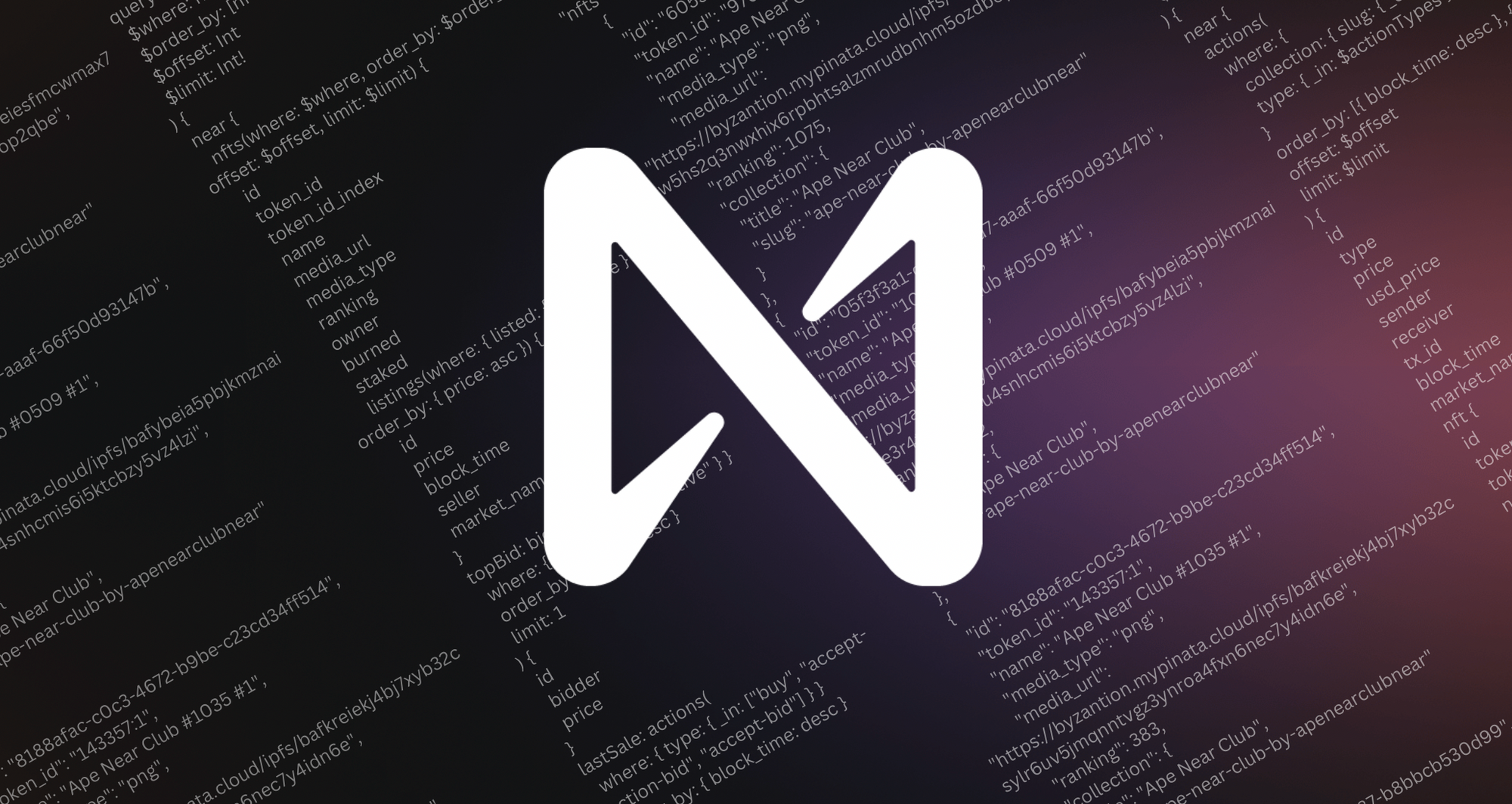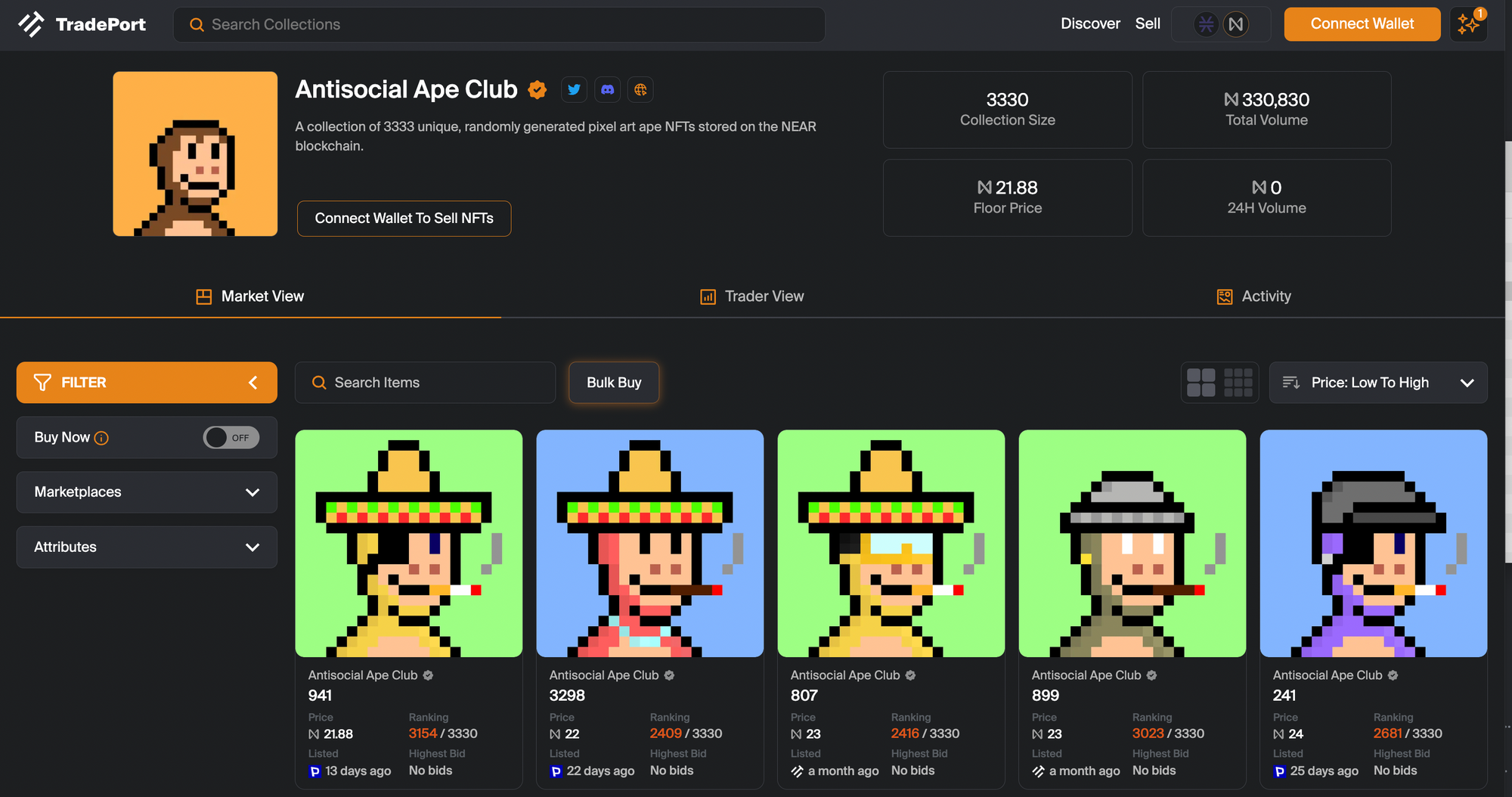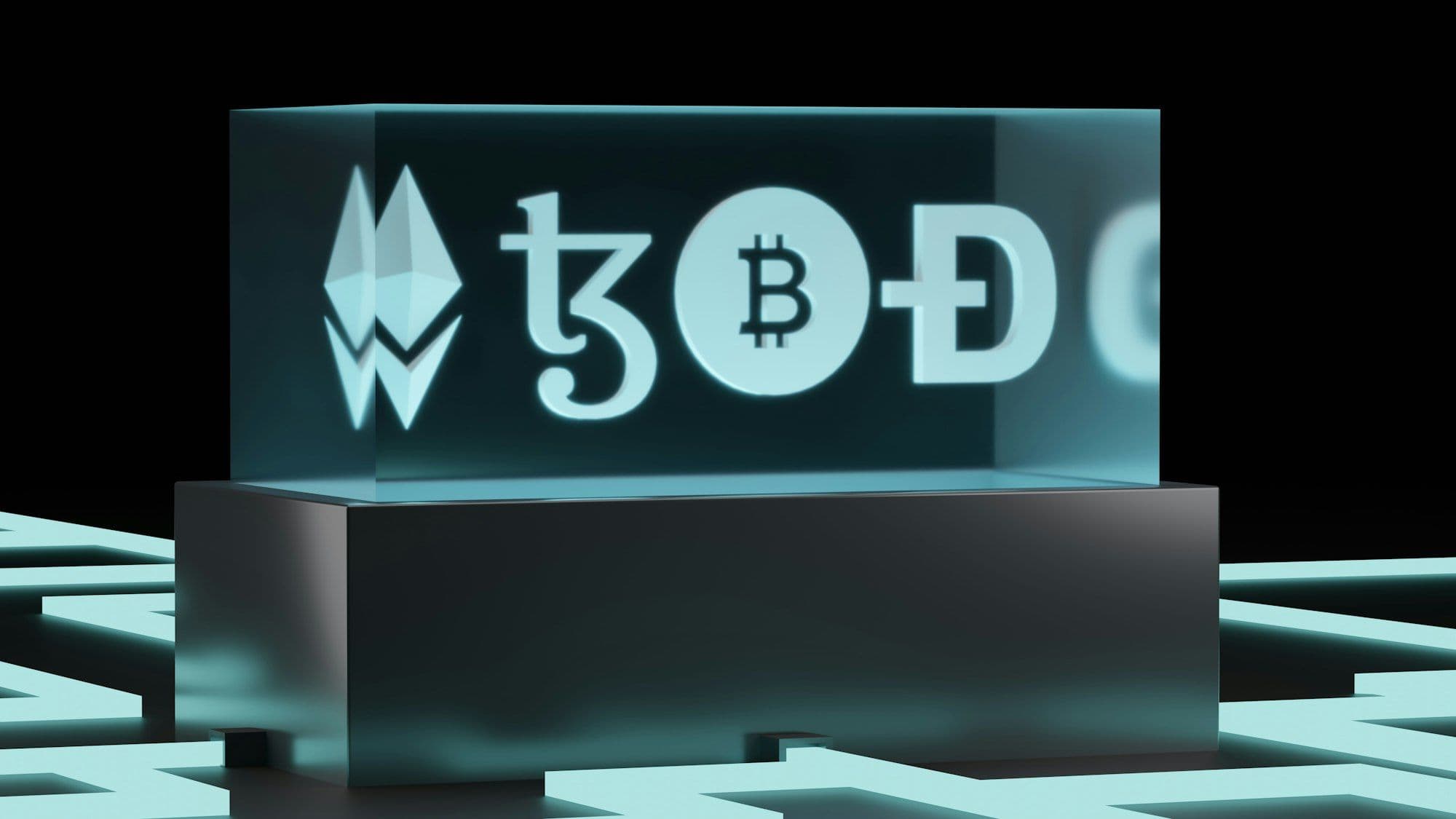
NEAR Protocol is a growing layer 1 blockchain that's committed to supporting decentralization and a strong developer ecosystem. The sky is the limit as to what could be created on NEAR's fast, cheap, and scalable technology. Indexer.xyz has all the data you need to build your next application on NEAR and today, we wanted to share a few ideas as to what could be built with our NEAR Indexer.
NEAR Social
NEAR Social is a decentralized social network that aims to provide a user-owned and privacy-focused alternative to centralized social media platforms. Unlike traditional social media platforms, NEAR social allows users to own their data, which is monetized on centralized platforms. It also provides a peer-to-peer network for social interactions, content creation, and distribution. NEAR social uses widgets, which are open-source software components that can be combined, forked, and created by anyone with some coding knowledge. Widgets can be updated and improved without re-compiling all dependent widgets, making the process faster and saving computation. They are similar to Lego blocks and can be updated and improved without re-compiling all dependent widgets, making the process faster and saving computation. Widgets can range from a simple button to an entire home screen of the NEAR social app. Some examples of available widgets on NEAR Social include an event planner, polls, Astro DAO’s bounties, a tool to keep track of New Years’ resolutions, the Pagoda console, a meme generator, and a tool to mint your own social avatars and use them as your profile picture.
Overall, using an indexer allows for more efficient and streamlined access to the data needed to create widgets on NEAR Social, making it easier to build useful and engaging user interfaces.

Gaming
Games can use blockchain to create more secure, transparent, and decentralized gaming experiences. It's becoming more popular for games to put their in-game assets on the blockchain as NFTs which allows those assets to be traded or sold by players, giving them full ownership and control over their in-game assets.
Once an asset becomes an NFT, you’re dealing with on-chain data and any action or display of that data requires indexing.
Indexing can be used to query and retrieve information about NFTs, such as their ownership history, transfer history, and current market value. This data can then be used by game developers to create more sophisticated in-game economies, where players can earn or purchase NFTs, use them to unlock new content or abilities, and trade them with other players for real money.
In addition to NFTs, blockchain indexers can also be used to store and verify game data, such as player scores, game statistics, and leaderboards. By storing this data on a decentralized blockchain, game developers can ensure that it is tamper-proof and transparent, preventing cheating and other forms of fraud. As blockchain technology continues to mature, we can expect to see more innovative use cases for indexers in the gaming industry.

Ecosystem Data
To understand a blockchain ecosystem and its performance, several types of macro data are helpful. One important metric is the number of active wallets or unique addresses, which gives an indication of user adoption and engagement. The number of transactions processed by the blockchain is another key indicator, as it shows the level of activity and demand for the blockchain's services. The total value of assets stored on the blockchain is also important, as it reflects the level of trust and confidence users have in the platform. Other useful macro data points include the hash rate, which measures the computing power securing the network, and the number of nodes on the network, which shows the level of decentralization. Finally, information on the development activity and updates to the blockchain's protocol can provide insights into the ecosystem's innovation and potential for growth. All of this data lives on-chain and requires an indexer in order to be accessed.

Marketplaces
On-chain data can also be used to facilitate transactions within the marketplace. When a user wants to buy or sell an NFT, the marketplace can use the on-chain data to verify ownership and transaction history and execute the transaction without the need for a third-party intermediary. The more robust the dataset, the more unique features can be added to a marketplace. A few examples of features that can be added with additional on-chain data are NFT aggregation, portfolio metrics, historical NFT data, and collection bids. Each of these elements interacts with on-chain events and indexers provide that context and platform to interact with the on-chain data. Indexers can also provide “off-chain” data such as NFT metadata. If you’re an NFT marketplace, it’s most likely imperative to display the image/video in addition to the attributes of a given NFT. Indexers, such as Indexer.xyz, can also provide this information to be displayed client-side.

Supply Chain Management
Supply chain companies have started to use Web 3 technologies to create more transparency and traceability in their operations. By leveraging blockchain and decentralized platforms, they can create a tamper-proof record of the entire supply chain, from the sourcing of raw materials to the final delivery of goods to the end customer. This provides greater visibility into the entire supply chain, which can help identify inefficiencies and vulnerabilities, reduce fraud, and improve sustainability.
Another way supply chain companies have used Web 3 is through the use of blockchain-based tracking and verification systems. These systems allow companies to track the movement of goods through the supply chain in real time, providing a clear picture of where each product is at any given time. This can help reduce the risk of theft, fraud, and counterfeiting, while also improving quality control and compliance with regulations.
Of course, all this data lives on-chain, and indexing is required in order to view and interact with such data.

Conclusion
If you're looking to build an application on NEAR protocol, be sure to check out our NFT Indexer, and request an API key, prior to building. You might be surprised as to how simple your back-end development can be with Indexer.



